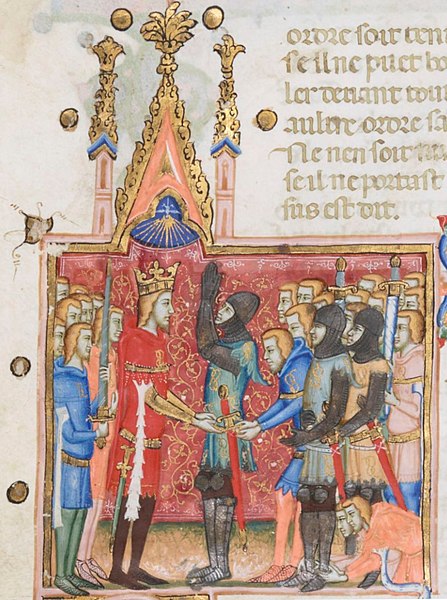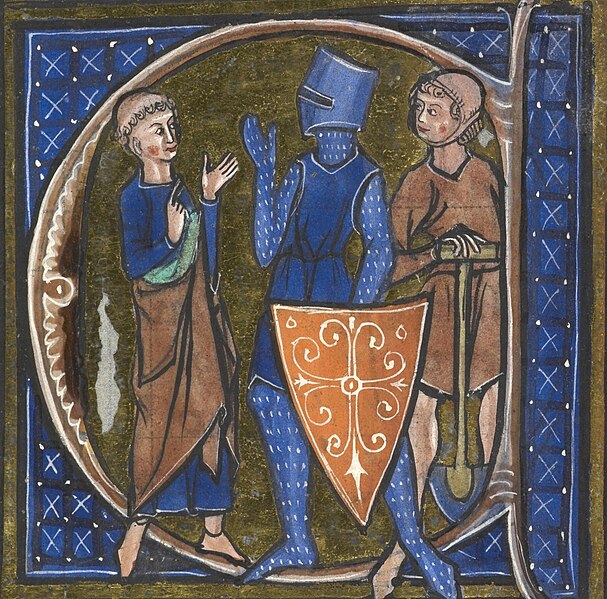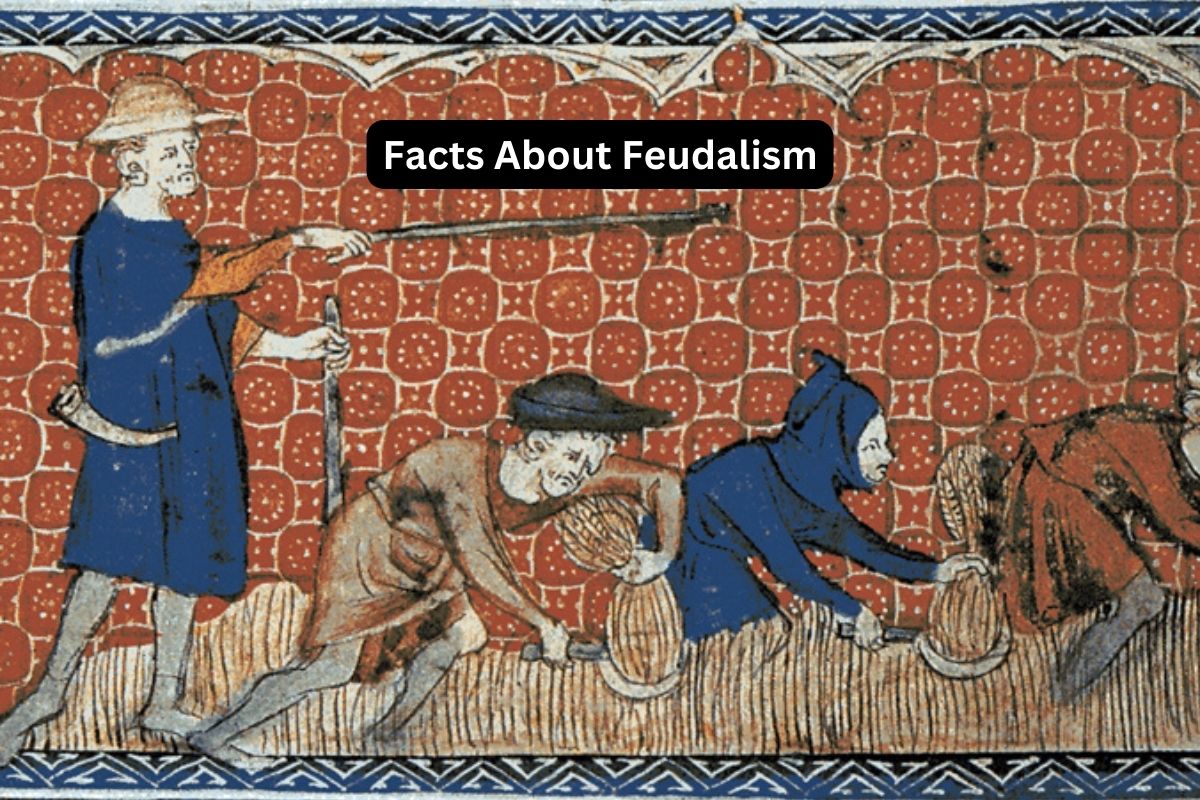Feudalism was a medieval socio-economic and political system that dominated Europe during the early Middle Ages.
It was characterized by a rigid hierarchy, where land ownership and the exchange of land for service formed the foundation of society.
This system, marked by feudal contracts, serfdom, and knights, was decentralized, with power concentrated in local lords.
Over time, it gave way to more centralized forms of governance but left a significant imprint on European history and culture.
Feudalism Facts
1. Originated in Europe during the early Middle Ages
Feudalism emerged in Europe during a period of significant turmoil, roughly between the 9th and 10th centuries.
It developed as a response to the collapse of centralized authority following the decline of the Roman Empire.
Also Read: Anglo Saxons Timeline
With the absence of a strong central government, local rulers sought to establish systems that would provide security and governance on a smaller scale.
2. Based on a strict social hierarchy
Feudal society was organized into a highly structured hierarchy, often represented as a pyramid. At the pinnacle was the monarch, typically a king or queen, who theoretically owned all the land in the kingdom.
Also Read: Dark Ages Facts
Below the monarch were the nobles or lords, who held large tracts of land granted to them by the king. The nobles, in turn, had vassals who swore loyalty to them in exchange for land and protection.
Knights served as the warrior class, often in the employ of lords, and at the base of the pyramid were the peasants or serfs who worked the land.

3. Centered around land ownership and the exchange of land for service
The fundamental element of feudalism was land. Kings granted parcels of land known as fiefs to the nobles or lords in exchange for their loyalty, military service, and support. These land grants were hereditary, meaning they could be passed down to the lord’s heirs.
The lords, in turn, granted portions of their land to vassals, who pledged their allegiance and military aid to the lords. This system of land tenure formed the basis of the feudal contract, which outlined the reciprocal obligations and duties between the lord and vassal.
4. Formalized through feudal contracts between lords and vassals
The feudal system was not merely based on informal agreements; it relied on formal contracts to define the relationships between lords and their vassals. These contracts, known as feudal oaths or feudal bonds, outlined the specific obligations and responsibilities of each party.
Typically, a vassal pledged loyalty and military service to their lord, promising to defend them in times of conflict. In return, the lord granted the vassal a fief, which included land and its associated privileges.
These contracts were often sealed with symbolic ceremonies, such as the vassal kneeling before the lord and placing their hands between the lord’s hands, demonstrating their submission and loyalty.
5. Relied on the manorial system for economic production
The manor was the central economic unit of feudal society. It consisted of the lord’s estate, which included the manor house, agricultural land, villages, and often a church.
The lord provided protection and justice for the people living on the manor in exchange for their labor and a share of their agricultural produce.
Serfs, who made up the majority of the population, worked the land, growing crops and raising livestock. They were bound to the manor and could not leave without the lord’s permission.
The manorial system ensured self-sufficiency, as nearly everything needed for daily life, including food, clothing, and shelter, was produced on the manor.
6. Serfs were peasants bound to the land they worked
Serfs were the lowest-ranking members of feudal society. They were not slaves, but their freedom was limited.
Serfdom was hereditary, meaning that a serf’s status was passed down to their descendants. They were bound to the land and could not leave the manor without the lord’s consent.
While they had some rights and protections, their lives were controlled by the lord, who could levy taxes, impose rules, and administer justice on the manor.
Serfs provided the labor necessary for agricultural production, which was the backbone of the feudal economy.

7. Knights were the feudal system’s military elite
Knights were a prominent feature of feudal society and served as the military elite. They were trained in the art of warfare from a young age and played a crucial role in providing protection to their lords and maintaining order within their territories.
Knights were typically vassals of nobles or lords, and their loyalty was tied to their feudal contracts. They fought on horseback and were known for their chivalric code, which emphasized honor, loyalty, and bravery in battle.
8. Authority was decentralized, with local lords holding significant power
Feudalism was characterized by a highly decentralized system of governance. Each lord or noble exercised significant autonomy and control over their own territory or domain.
They acted as mini-monarchs within their lands, making local laws, collecting taxes, and administering justice.
This decentralization of power made it challenging for central authorities, such as kings or emperors, to exert direct control over large regions, leading to a fragmented political landscape.
9. Began to decline in the 12th century due to various factors
Feudalism began to decline around the 12th century due to several interrelated factors. One significant factor was the growth of trade and commerce, which led to the rise of towns and cities. This urbanization created new economic opportunities and challenged the agricultural-based feudal system.
Additionally, the Crusades and increased contact with other cultures exposed Europeans to new ideas and technologies, contributing to social and economic changes.
Lastly, the centralization of power in monarchies and the development of stronger, more centralized states undermined the authority of local lords and weakened the feudal system.
10. Left a lasting legacy in European history and culture
Although feudalism eventually gave way to more centralized forms of governance, it left a significant and enduring legacy in European history and culture.
Feudalism shaped the social structure of medieval Europe, influenced the development of legal systems, and contributed to the growth of feudal institutions like the Church.
It also influenced the arts and literature of the time, with tales of knights and chivalry becoming iconic elements of European culture.
Even as it waned, elements of the feudal system, such as the concept of land ownership and noble titles, persisted into modern European societies, leaving an indelible mark on the continent’s history.
